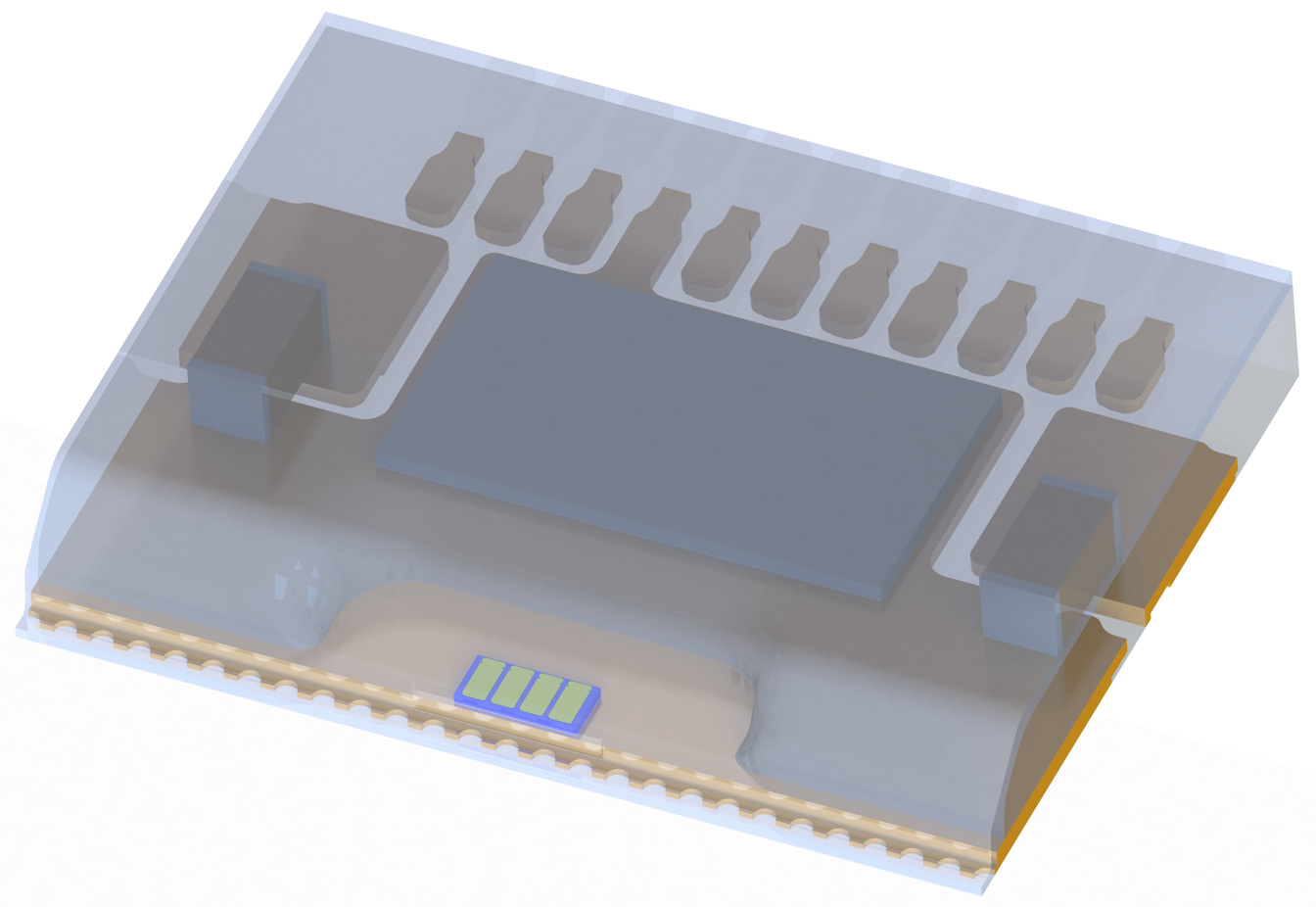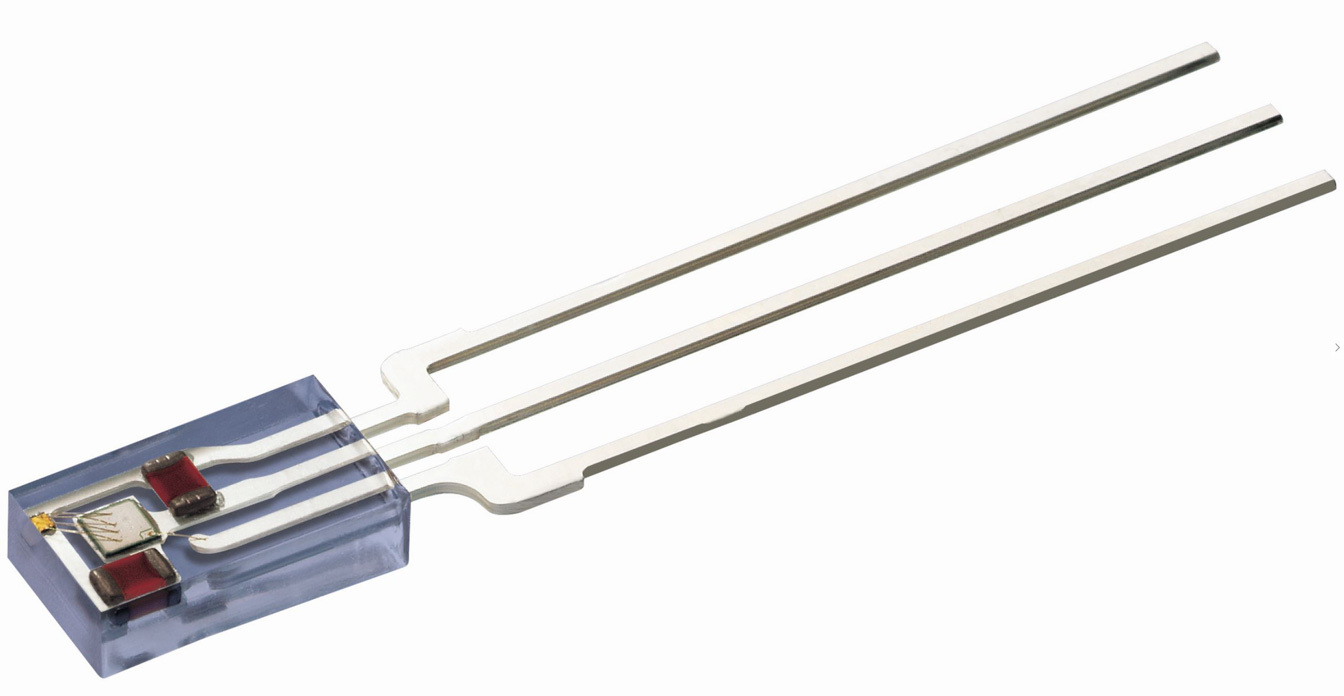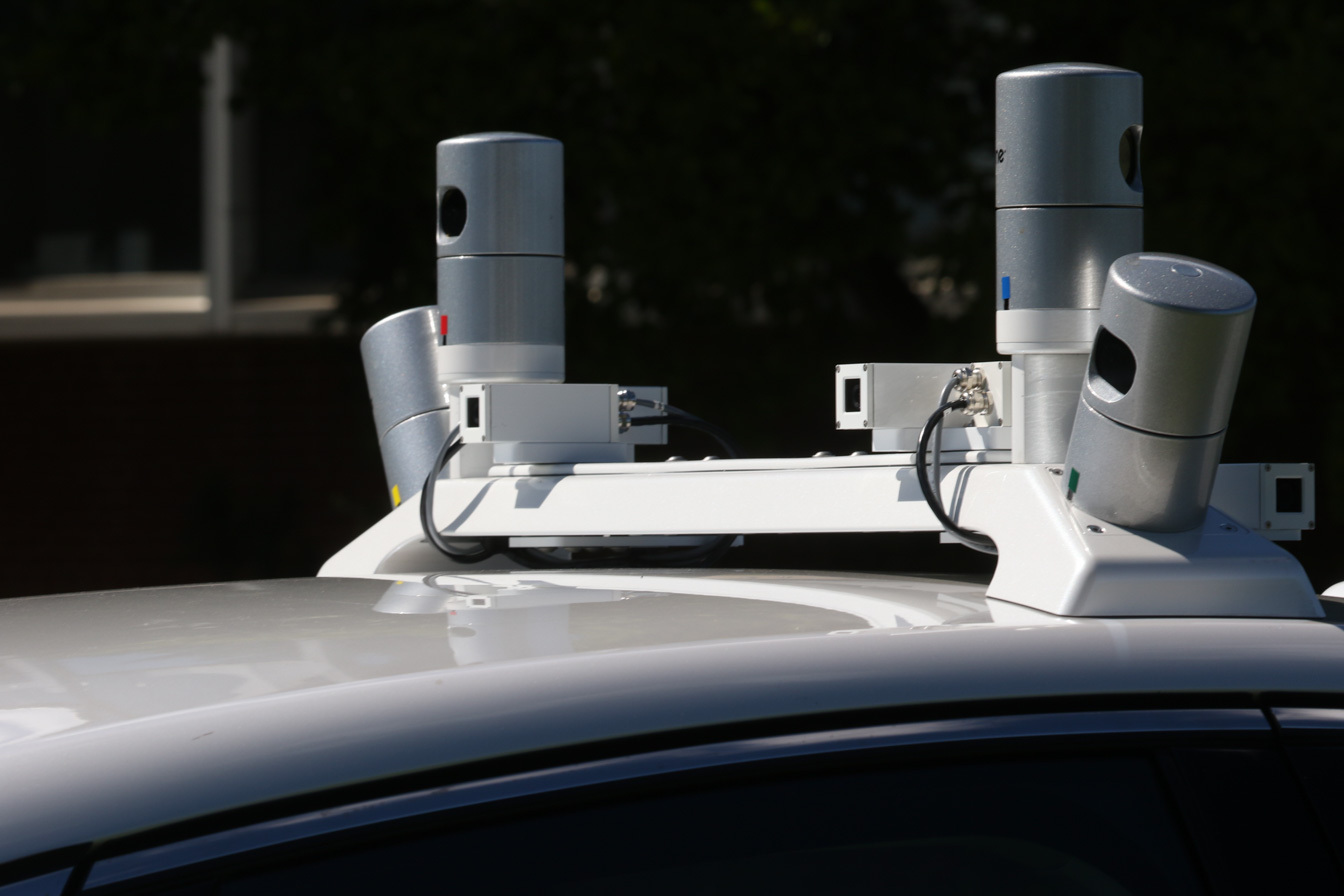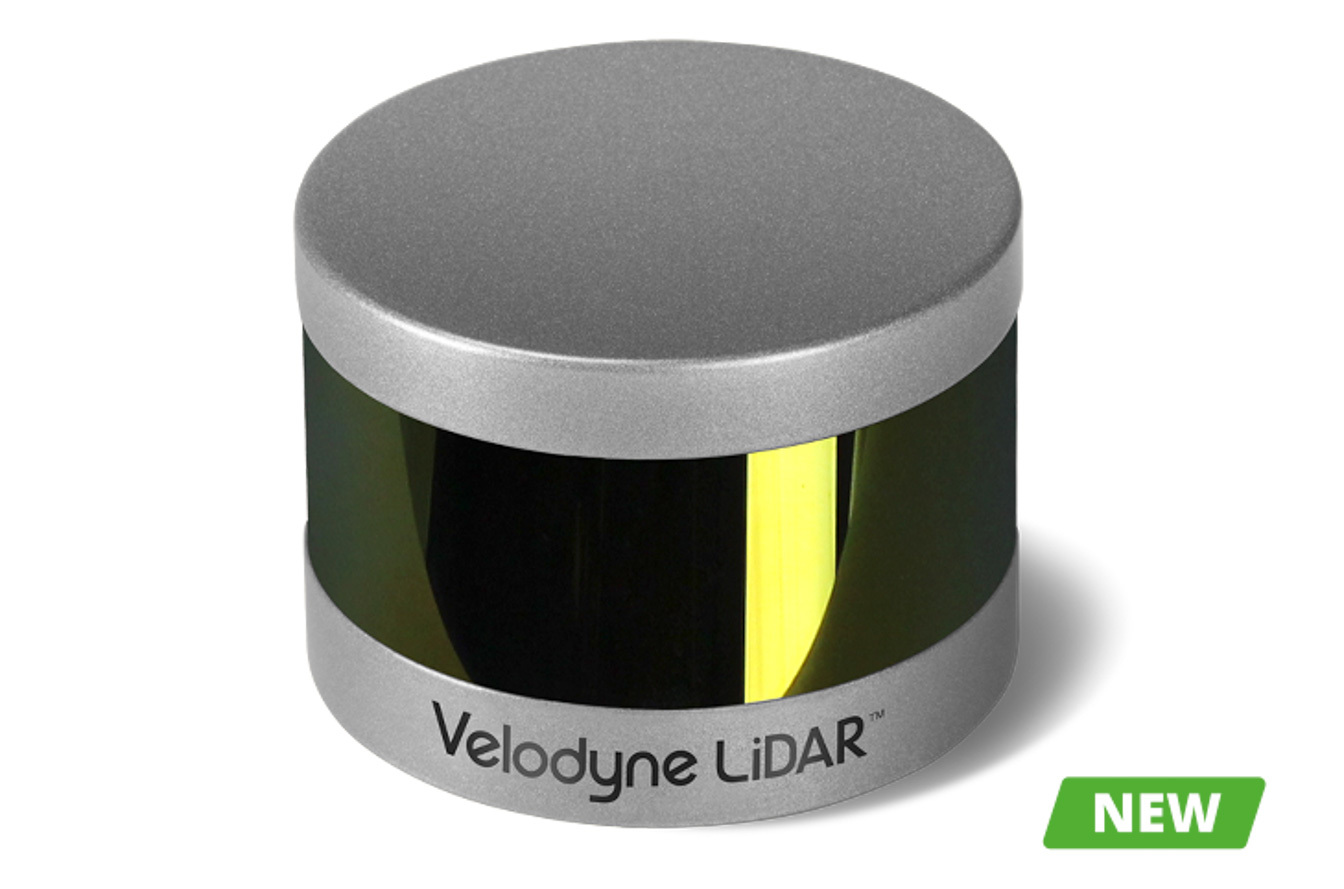Hamartia Antidote
ELITE MEMBER

- Joined
- Nov 17, 2013
- Messages
- 35,188
- Reaction score
- 30
- Country
- Location
https://www.extremetech.com/extreme/239359-big-boost-self-driving-cars-osram-cuts-lidar-cost-less-50
Could this be the order-of-magnitude cost drop that enables self-driving cars? Osram has announced a lidar chipset that will sell for less than $50 in volume. Lidar is what’s in the scanners that create a map of the surroundings as you drive: curbs, medians, signs, other cars, pedestrians, and animals. Osram declares it’s “a milestone for laser sensors in self-driving cars” because of the price and reliability from a device with no moving parts.
Test samples will be available in early 2017. Production quantities will arrive in 2018. The unit will be small enough to fit behind the front grille, rather than atop the roof.

Scanning lidar module (source: Osram Opto Semiconductors)
Four channels, no moving parts
Osram Opto Semiconductors of Germany announced the four-channel lidar last week at the Electronica 2016 trade show in Munich. The system comprises a laser bar using four individually controllable laser diodes and control circuitry surface mounted on a single module. As mentioned above, this is the first lidar unit for self-driving assistance that has no moving parts, which Osram declares a breakthrough.
“The new laser is a bar consisting of four laser diodes that are separated in the production process, but are not individual diodes,” says Osram product manager Sebastian Bauer. “The result is a laser that emits four perfectly parallel beams. Our customers no longer have to spend time laboriously adjusting the individual light sources.” The lasers are aimed by an array of very small mirrors in a MEMS (micro-electro-mechanical system) rather than larger, physically moving mirrors. The MEMS device was developed by Innoluce, which was acquired in October by Infineon Technologies.

Source: Osram Opto Semiconductors
Range out to 660 feet (11 seconds at highway speeds)
Osram says the lidar (light detection and ranging) module covers 120 degrees horizontally and 20 degrees vertically. Detection ranges in daytime are 200 meters (660 feet, or 7.5 seconds at 60 mph) for vehicles, and 70 meters (230 feet) for pedestrians. Its pulse length (when it’s on) is 5 nanoseconds, compared with 20ns for earlier lidar systems; the less time the laser is on, the easier it is to meet eye safety standards.
Osram says different pulse laser diodes have been used for more than a decade in emergency braking and adaptive cruise control systems. Many ACC systems user radar, which is less susceptible to bad weather and darkness. It’s unclear if a self-driving car would need lidar devices facing the sides and rear, or if that might be handled by sonar, radar, or cameras.

Ford Fusion self-driving prototype
Big competition for moving-component lidar units

Source: Velodyne
The lidar units for prototype self-driving cars now offered are the largish devices looking like soup cans, typically mounted on the roof, and sometimes the side mirrors. The unit above is on a prototype Ford Fusion self-drive car. Advances have brought the units down to hockey-puck size (actually, more like a can of tuna fish). Prices from Velodyne, arguably the best known provider, were in the range of $70,000, while its hockey puck unit (inset) is about $8,000. Note the Osram’s price is for the module containing the lidar and MEMS components, but not a complete unit an automaker can bolt behind the grille. Osram’s Bauer was quoted as saying that the mass production price could fall to 40 euros ($43.50) by IEEE Spectrum.
Osram did not say when its module would make its way into production cars. The auto industry, when dealing with complex devices and wary of lawsuits, often takes 3-5 years to go from sample device to on-sale. That timing would intersect with automakers’ announcement of the first self-driving cars by 2020 or within five years (2021).
Could this be the order-of-magnitude cost drop that enables self-driving cars? Osram has announced a lidar chipset that will sell for less than $50 in volume. Lidar is what’s in the scanners that create a map of the surroundings as you drive: curbs, medians, signs, other cars, pedestrians, and animals. Osram declares it’s “a milestone for laser sensors in self-driving cars” because of the price and reliability from a device with no moving parts.
Test samples will be available in early 2017. Production quantities will arrive in 2018. The unit will be small enough to fit behind the front grille, rather than atop the roof.

Scanning lidar module (source: Osram Opto Semiconductors)
Four channels, no moving parts
Osram Opto Semiconductors of Germany announced the four-channel lidar last week at the Electronica 2016 trade show in Munich. The system comprises a laser bar using four individually controllable laser diodes and control circuitry surface mounted on a single module. As mentioned above, this is the first lidar unit for self-driving assistance that has no moving parts, which Osram declares a breakthrough.
“The new laser is a bar consisting of four laser diodes that are separated in the production process, but are not individual diodes,” says Osram product manager Sebastian Bauer. “The result is a laser that emits four perfectly parallel beams. Our customers no longer have to spend time laboriously adjusting the individual light sources.” The lasers are aimed by an array of very small mirrors in a MEMS (micro-electro-mechanical system) rather than larger, physically moving mirrors. The MEMS device was developed by Innoluce, which was acquired in October by Infineon Technologies.

Source: Osram Opto Semiconductors
Range out to 660 feet (11 seconds at highway speeds)
Osram says the lidar (light detection and ranging) module covers 120 degrees horizontally and 20 degrees vertically. Detection ranges in daytime are 200 meters (660 feet, or 7.5 seconds at 60 mph) for vehicles, and 70 meters (230 feet) for pedestrians. Its pulse length (when it’s on) is 5 nanoseconds, compared with 20ns for earlier lidar systems; the less time the laser is on, the easier it is to meet eye safety standards.
Osram says different pulse laser diodes have been used for more than a decade in emergency braking and adaptive cruise control systems. Many ACC systems user radar, which is less susceptible to bad weather and darkness. It’s unclear if a self-driving car would need lidar devices facing the sides and rear, or if that might be handled by sonar, radar, or cameras.

Ford Fusion self-driving prototype
Big competition for moving-component lidar units

Source: Velodyne
The lidar units for prototype self-driving cars now offered are the largish devices looking like soup cans, typically mounted on the roof, and sometimes the side mirrors. The unit above is on a prototype Ford Fusion self-drive car. Advances have brought the units down to hockey-puck size (actually, more like a can of tuna fish). Prices from Velodyne, arguably the best known provider, were in the range of $70,000, while its hockey puck unit (inset) is about $8,000. Note the Osram’s price is for the module containing the lidar and MEMS components, but not a complete unit an automaker can bolt behind the grille. Osram’s Bauer was quoted as saying that the mass production price could fall to 40 euros ($43.50) by IEEE Spectrum.
Osram did not say when its module would make its way into production cars. The auto industry, when dealing with complex devices and wary of lawsuits, often takes 3-5 years to go from sample device to on-sale. That timing would intersect with automakers’ announcement of the first self-driving cars by 2020 or within five years (2021).
